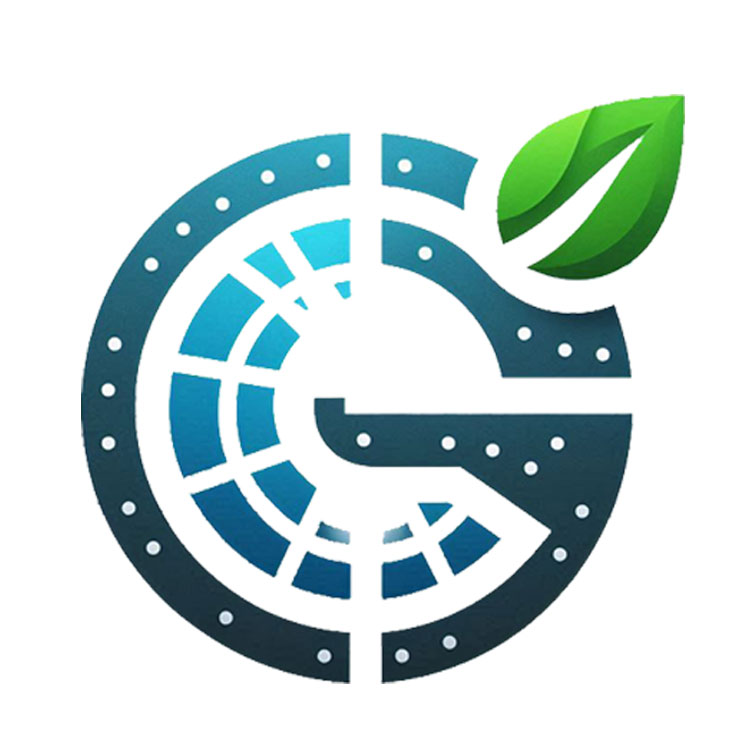Artificial Intelligence AI
Artificial Intelligence AI Clean Energy in the Cleantech industry has several subcategories, each focused on leveraging AI technologies to enhance sustainability, efficiency, and environmental monitoring.
- Here are several categories and subcategories of Artificial Intelligence (AI) Clean Energy within the cleantech that you can use as a Features when you are Add Listing in Global Cleantech Directory Platform. Artificial Intelligence AI’ subcategories help people’s searching in the Global Cleantech Directory Platform by categorizing how AI can drive innovation and efficiency in various aspects of the Cleantech industry, contributing to a more sustainable and environmentally friendly future.
1. Energy Management:
- – Smart Grids: AI helps manage electricity distribution, integrating renewable energy sources, and balancing supply and demand.
– Energy Storage Optimization: AI improves the efficiency of energy storage systems, such as batteries, through predictive maintenance and performance optimization.
2. Renewable Energy:
- – Solar Energy Optimization: AI enhances solar panel efficiency through predictive analytics for maintenance and optimal positioning.
– Wind Energy Optimization: AI improves wind turbine performance by predicting wind patterns and optimizing operational parameters.
3. Energy Efficiency:
- – Building Energy Management Systems (BEMS): AI automates and optimizes heating, ventilation, air conditioning (HVAC), lighting, and other systems in buildings for energy conservation.
– Industrial Energy Management: AI optimizes energy use in industrial processes, reducing waste and improving overall efficiency.
4. Environmental Monitoring and Management:
- – Air Quality Monitoring: AI analyzes data from sensors to monitor and predict air quality, aiding in pollution management.
– Water Quality Monitoring: AI systems detect contaminants and assess water quality, ensuring safe and clean water supply.
– Waste Management: AI optimizes waste collection, sorting, and recycling processes, enhancing resource recovery and reducing landfill use.
5. Smart Agriculture:
- – Precision Farming: AI aids in optimizing crop yields, irrigation, and pest control through data analysis and predictive modeling.
– Resource Management: AI helps manage the use of water, fertilizers, and pesticides more efficiently.
6. Climate and Weather Prediction:
- – Climate Modeling: AI improves the accuracy of climate models, helping predict long-term climate changes and their impacts.
– Weather Forecasting: AI enhances weather prediction models, aiding in renewable energy planning and disaster preparedness.
7. Sustainable Transportation:
- – Electric Vehicle (EV) Management: AI optimizes battery life, charging schedules, and route planning for electric vehicles.
– Traffic Management: AI systems improve traffic flow and reduce congestion, leading to lower emissions and energy use.
8. Supply Chain Optimization:
- – Sustainable Supply Chains: AI optimizes supply chain operations to reduce energy consumption, waste, and environmental impact.

Empowering a Sustainable Future
Innovate, Connect, Transform
Recommended Tags
Artificial Intelligence AI Clean Energy
- Here are some commonly used tags in the Artificial Intelligence AI Clean Energy within the cleantech that you can use when you are Add Listing in Global Cleantech Directory Platform. Artificial Intelligence AI’ tags help categorize and find content related to the use of artificial intelligence AI in clean technology, focusing on improving sustainability, energy efficiency, and environmental protection when people are searching in the Global Cleantech Directory Platform.
Renewable Energy Optimization
- Solar Energy Forecasting
Wind Energy Prediction
Hydropower Optimization
Bioenergy Efficiency
Geothermal Energy Management
Renewable Energy Integration
Energy Efficiency
- Grid Stability
Load Balancing
Grid Resilience
Distributed Energy Resources(DERs)
DERs
Microgrids
Virtual Power Plants
Energy Storage
- Battery Management Systems
Predictive Maintenance
Energy Storage Optimization
Hybrid Energy Storage Systems
Vehicle-to-Grid(V2G) Integration
V2G
Smart Charging Solutions
Predictive Maintenance
- Wind Turbine Monitoring
Solar Panel Health Monitoring
Equipment Failure Prediction
Condition Based Maintenance
Asset Performance Management
Predictive Analytics
Smart Cities
- Urban Energy Management
Smart Building Integration
Public Transit Optimization
Intelligent Street Lighting
Smart Water Management
Wasteto Energy Solutions
Data Analytics
- Big Data Energy
Real Time Monitoring
Energy Usage Patterns
Anomaly Detection
Data Driven Decision Making
AI Powered Dashboards
Emission Reduction
- Carbon Footprint Analysis
Emission Monitoring
AI Carbon Capture
Renewable Energy Credits(RECs)
RECs
AI Climate Change Mitigation
Carbon Trading Optimization
AI-Driven Innovation
- Machine Learning Energy
Deep Learning Applications
AI Energy Research
AI Enhanced Renewable Technologies
AI Powered Sustainability Solutions
Autonomous Energy Systems
Policy and Regulation
- AI Energy Policy
Regulatory Compliance
Energy Market Analysis
Subsidy Optimization
Incentive Program Design
Policy Impact Assessment
Energy Trading
- AI Energy Markets
Automated Trading Systems
Price Forecasting
Market Simulation
Risk Management
Blockchain Energy Trading
Consumer Engagement
- Personalized Energy Recommendations
Smart Home Energy Management
Customer Behavior Analytics
AI Powered Energy Apps
User Engagement Platforms
Demand Side Management
Renewable Energy Financing
- Investment Risk Assessment
Project Feasibility Analysis
Financial Modeling
Crowd funding Platforms
AI Green Bonds
Renewable Energy Investments
Educational and Training
- AI Energy Education
Workforce Training
Knowledge Sharing Platforms
Skill Development
Research Collaborations
AIDriven Educational Tools
Popular Q&A
Artificial Intelligence AI Clean Energy
- Here are some popular questions and answers (Q&A) related to Artificial Intelligence AI Clean Energy in the clean energy sector:
AI in lean energy involves using advanced algorithms and machine learning techniques to optimize the generation, distribution, and consumption of renewable energy sources. AI helps in forecasting energy production, managing smart grids, enhancing energy storage systems, and improving energy efficiency.
AI contributes to renewable energy forecasting by analyzing large datasets, including weather conditions, historical energy production, and consumption patterns. Machine learning models can predict the amount of energy that will be generated from sources like solar and wind, helping to balance supply and demand.
1. Smart Grid Management: AI optimizes the distribution of electricity, reduces losses, and improves reliability.
2. Energy Consumption Optimization: AI-driven systems can adjust energy usage in real-time to reduce costs and improve efficiency.
3. Predictive Maintenance: AI monitors the condition of equipment and predicts failures before they occur, reducing downtime and maintenance costs.
4. Energy Storage Management: AI optimizes the use of energy storage systems, such as batteries, to ensure a steady supply of power.
AI improves the efficiency of solar and wind energy systems by:
– Analyzing Performance Data: AI identifies patterns and anomalies in energy production.
– Optimizing Positioning: Machine learning algorithms can determine the optimal placement and orientation of solar panels and wind turbines.
– Enhancing Maintenance: Predictive maintenance powered by AI ensures that equipment operates at peak efficiency.
1. Increased Efficiency: AI optimizes energy production and consumption, leading to lower costs and reduced waste.
2. Enhanced Reliability: AI improves grid stability and reduces the likelihood of blackouts.
3. Environmental Impact: By optimizing renewable energy sources, AI helps reduce greenhouse gas emissions.
4. Cost Savings: Improved efficiency and predictive maintenance reduce operational costs.
– Data Quality and Availability: High-quality, comprehensive data is required for effective AI models.
– Technical Complexity: Implementing AI systems can be complex and requires specialized expertise.
– Regulatory and Policy Issues: Varying regulations across regions can complicate AI integration.
– Initial Costs: The upfront investment for AI technology can be substantial.
AI enhances smart grid technology by:
– Demand Response: AI adjusts energy supply based on real-time demand, reducing peak loads.
– Fault Detection: Machine learning models detect and isolate faults quickly, minimizing downtime.
– Energy Theft Prevention: AI algorithms can identify unusual patterns that indicate energy theft.
Yes, AI can help integrate renewable energy with traditional energy systems by:
– Balancing Supply and Demand: AI forecasts renewable energy production and adjusts traditional energy sources accordingly.
– Grid Stability: AI maintains grid stability by managing the intermittent nature of renewable energy.
– Energy Trading: AI facilitates efficient energy trading between different energy producers and consumers.
Governments can promote AI for clean energy by:
– Providing Funding and Incentives: Supporting research and development in AI technologies.
– Setting Regulations and Standards: Creating a regulatory framework that encourages the adoption of AI in the energy sector.
– Facilitating Collaboration: Encouraging partnerships between public and private sectors for AI innovation.
– Education and Training: Investing in education and training programs to build a skilled workforce.
Future trends in AI and clean energy include:
– Enhanced AI Algorithms: More advanced algorithms for better prediction and optimization.
– Integration with IoT: Combining AI with the Internet of Things (IoT) for smarter energy management.
– Decentralized Energy Systems: AI managing distributed energy resources, such as home solar panels and batteries.
– Greater Adoption of AI: Wider implementation of AI across all areas of the energy sector, from production to consumption.
- These questions and answers provide a broad overview of how Artificial Intelligence (AI) Clean Energy is revolutionizing the clean energy sector and the potential benefits and challenges associated with its integration.
- Explore the link to learn about Artificial Intelligence AI category and discover related insights from our Annual EarthDay Conference Speech


